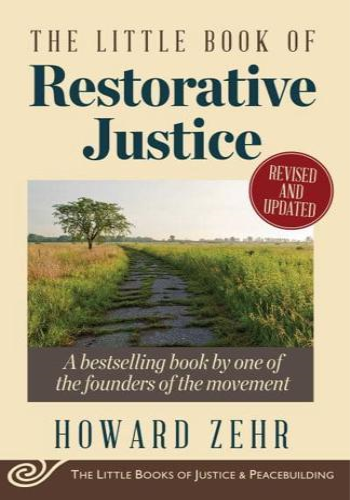Chapter 1: What is Restorative Justice?
Summary: Restorative justice is an approach to justice that seeks to repair harm caused by crime and conflict by bringing together the victims, offenders, and community members affected. It emphasizes accountability, remorse, and the healing of relationships.
Example: A school uses restorative circles to address bullying incidents. Students involved in the bullying, along with the victims and supportive adults, come together to discuss the harm caused, understand the consequences, and develop a plan for amends and reconciliation.
Chapter 2: The Principles of Restorative Justice
Summary: The principles of restorative justice include:
* Inclusion: Involving all parties affected by the crime/conflict
* Dialogue: Encouraging open and honest communication to understand perspectives and experiences
* Accountability: Holding offenders responsible for their actions while exploring the underlying causes of their behavior
* Repair: Focusing on healing and reconciliation rather than punishment
* Reintegration: Reincorporating offenders into the community in a meaningful way
Example: In a case of shoplifting, the victim, the offender, and community representatives meet to discuss the incident. The offender explains their reasons for stealing, and the victim expresses how they were impacted. Together, they develop a plan for the offender to make restitution and contribute to the community.
Chapter 3: The Restorative Justice Process
Summary: The restorative justice process typically involves several stages:
* Reporting the incident: Victims report crimes/conflicts to the authorities or community-based organizations
* Investigation: Authorities or facilitators gather information and determine whether restorative justice is appropriate
* Convening a meeting: Victims, offenders, and community members are brought together to participate in a restorative dialogue
* Dialogue and exploration: Participants share their perspectives, experiences, and needs
* Agreeing on amends: The group develops a plan for the offender to repair the harm caused
* Implementation: The offender takes steps to fulfill the agreed-upon amends
* Follow-up: The group reconvenes to assess progress and provide support
Example: After a domestic violence incident, the victim and the offender participate in a restorative circle facilitated by a trained mediator. They discuss the root causes of the conflict, the impact of the violence, and develop a plan for the offender to address their underlying issues and make amends.
Chapter 4: The Benefits of Restorative Justice
Summary: Restorative justice offers several benefits:
* Increased victim satisfaction: Victims feel empowered to participate in the process and have their voices heard
* Reduced recidivism: Offenders are more likely to take responsibility for their actions and reintegrate into society
* Community healing: Restorative justice brings together community members to address underlying issues and build relationships
* Cost-saving: Restorative processes can be less costly than traditional criminal justice approaches
* Social transformation: Restorative principles can foster empathy, accountability, and a sense of community
Example: A neighborhood plagued by vandalism and property crime adopts a restorative approach. Community members work with young offenders to identify the factors driving their behavior, and together they implement programs to address poverty, lack of opportunity, and social isolation.
Chapter 5: Challenges and Criticisms
Summary: Restorative justice also faces challenges and criticisms:
* Not suitable for all cases: Restorative justice may not be appropriate for serious crimes or offenders with high-risk factors
* Time-consuming: The process can be lengthy and require significant resources
* Lack of uniform standards: Practices can vary widely, raising concerns about fairness and consistency
* Potential for victim retraumatization: Victims may experience emotional distress if they are not adequately supported throughout the process
* Insufficient accountability: Some argue that restorative approaches can be too lenient and fail to provide adequate consequences for offenders
Example: A case of sexual assault is referred to restorative justice, but the victim feels pressured to participate and does not believe the offender is genuinely remorseful. The restorative process fails to provide a satisfactory resolution for the victim and raises concerns about the potential for retraumatization.






